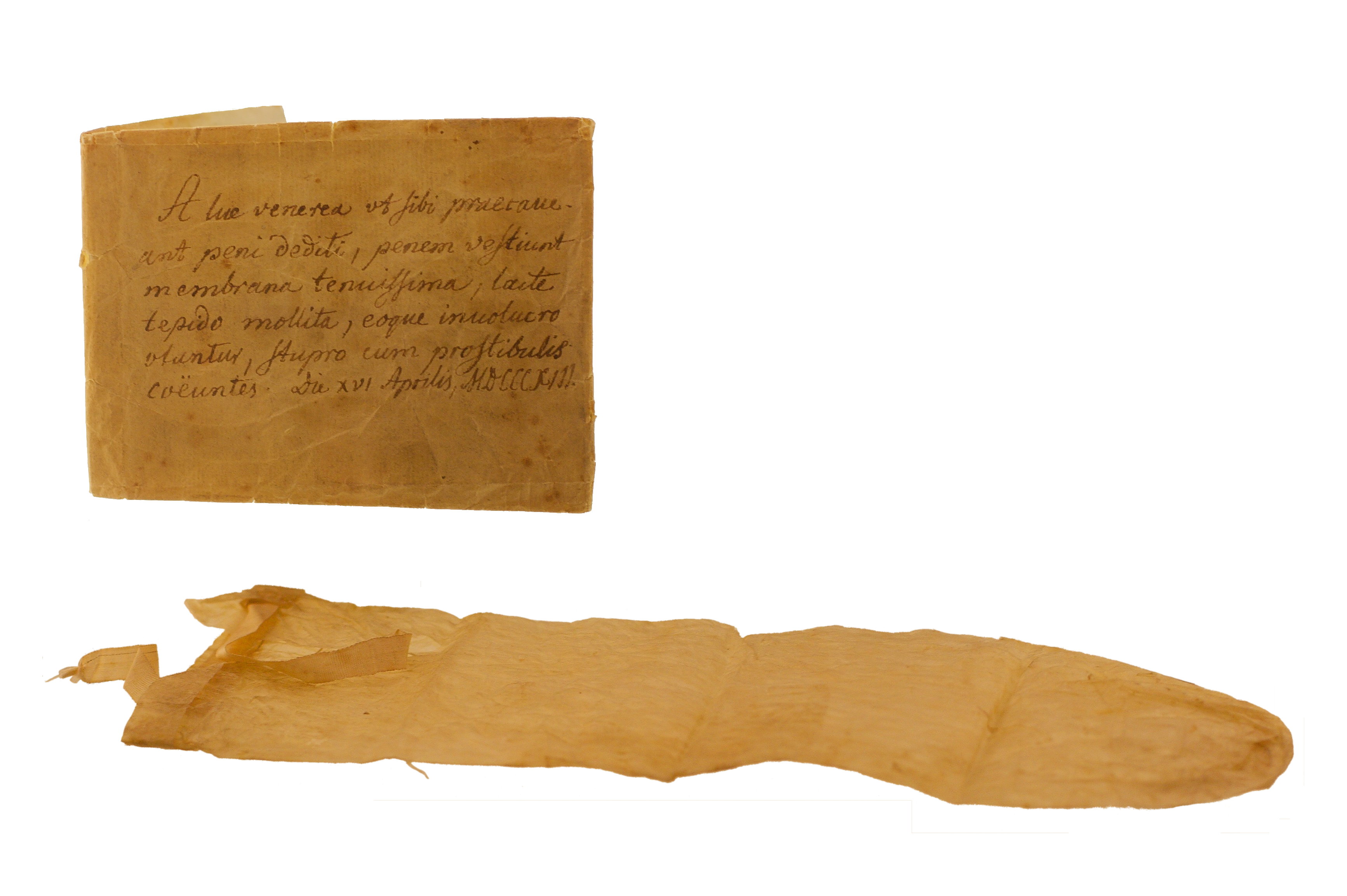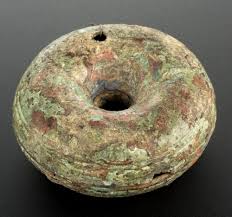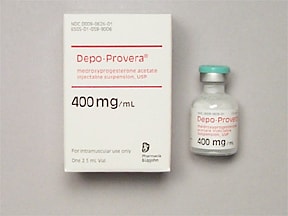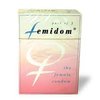- Points
- 0
3000 B.C.
The condom is invented in Egypt. Ancient drawings clearly depict men wearing condoms - sometimes made of material that may have been animal hide. It's not clear what they were made of -- or whether they were used for sex or ceremonial dress.

1850 B.C.
Meet the pessary. It's the earliest contraceptive device for women. Pessaries are objects or concoctions inserted into the vagina to block or kill sperm. By 1850 B.C., Egyptians used pessaries made of crocodile dung, honey, and sodium carbonate. Crocodile dung is alkaline. But its use, note contraceptive historians Malcolm Potts and Martha Campbell, "perhaps reflects Freudian more than pharmacologic concerns."


600 B.C.
Greek colonists found Celene in North Africa. Soon after, they discover a great treasure: Silphion, reputedly the first oral contraceptive. Silphion was an herb -- thought to be a kind of giant fennel -- that grew only in the area now known as Libya. Despite heroic efforts, it could not be cultivated. Worth its weight in silver, silphion was harvested to extinction by 100 A.D.
1640 A.D.
The oldest known condoms -- dated to about 1640 -- are found in Dudley Castle near Birmingham, England. They were made of fish and animal intestines. Condoms in those days were used to prevent sexually transmitted diseases rather than for contraception.

1734
Young Giacomo Girolamo Casanova begins his amorous career. He is among the first to use condoms to prevent pregnancy. Said to prefer condoms made from lamb intestine -- still the preferred material for natural gut condoms -- he also used linen condoms tied off with a ribbon.
1844
Charles Goodyear patents vulcanization of rubber. Soon, rubber condoms are mass produced. Unlike modern condoms -- made to be used once and thrown away -- early condoms were washed, anointed with petroleum jelly, and put away in special wooden boxes for later reuse. British playwright and essayist George Bernard Shaw called the rubber condom the "greatest invention of the nineteenth century."
1844-1873
The U.S. contraceptive industry flourishes. In addition to condoms (immediately known as "rubbers"), there's widespread sale and use of intrauterine devices or IUDs, douching syringes, vaginal sponges, diaphragms and cervical caps (then called "womb veils"), and "male caps" that covered only the tip of the penis.


1873
The U.S. Congress passes the Comstock laws. Written by dry goods merchant and anti-obscenity crusader Anthony Comstock, the law makes all forms of contraception illegal. The contraceptive industry continues to flourish -- but the devices are now sold to promote "feminine hygiene."
1880s
Penniless New York City immigrant Julius Schmid gets extra sausage casings from butcher shops and makes them into skin condoms. It becomes a big business by 1890. By the 1930s, his condom empire is making millions. His Ramses and Sheik brands are still popular.
1898
Nineteen-year-old Margaret Sanger's mother dies at age 50, exhausted from giving birth to 11 children. Sanger becomes a nurse and aids survivors of botched abortions. Later she turns her attention to the development of better contraceptives. Her dream: A birth control pill.
1906
Cyrus McCormick, inventor of the mechanical harvester, is diagnosed withschizophrenia. His wife, Katherine, dreads passing on the mental illness to future children. Later she forms a partnership with birth control pioneer Margaret Sanger. She funds contraception research with her sizeable fortune. This work eventually leads to the development of the birth control pill.
1930-1960
The most popular female contraceptive is Lysol disinfectant. Ads tout it as a feminine hygiene product, with testimonials from prominent European "doctors." Later investigation by the American Medical Association showed that these experts did not exist. Despite its longstanding popularity, Lysol does not work as a contraceptive.
1918
Condoms become legal in the U.S. Troops fighting in World War I ignored official Army advice to abstain from sex. They obtained condoms overseas -- and brought them home.
1921
In the 1920s, the U.S. birth rate drops by half. Condom reliability is still terrible by modern standards, but people achieved effective birth control by combining condoms, the rhythm method, male withdrawal, diaphragms, and/or intrauterine devices.
1951
Katherine McCormick funds Gregory Pincus's research into developing an oral contraceptive. Luckily two drug companies, Syntex and Searle, each developed a form of synthetic progesterone. They allow Pincus to explore use of this female hormone in his work.
1960
The Searle drug company receives FDA approval for Enovid - the first birth control pill. "The Pill" revolutionizes contraception. It's 100% effective -- but has terrible side effects, including life-threatening blood clots. Eventually it's realized that the dose is 10 times too high.
1965
The U.S. Supreme Court strikes down the Comstock laws that banned contraception.
1976
A T-shaped IUD is approved by the FDA, and other designs follow. These devices are inserted by doctors and provide birth control for up to 10 years. They fall out of favor after one - the Dalkon Shield - is found to cause pelvic inflammatory disease in some women.

1980s
The modern, low-dose, two- and three-phase birth control pills become available.
1992
The FDA approves the first hormone shot to prevent pregnancy for several months at a time -- Depo Provera.

1998
The first emergency contraception is approved by the FDA. Women can take Preven pills up to 72 hours after sex to prevent pregnancy.
2000-2002
Four new birth control products are approved by the FDA - the first in a decade. Ortho Evra, a birth control "patch," slowly releases hormones through the skin, freeing women from a daily pill. NuvaRing, a small, flexible ring as big as a silver dollar, is inserted into the vagina and releases hormones for three weeks. Lunelle is a monthly hormone injection. Mirena is an IUD effective for 5 years; it also causes lighter periods for most women.
2003
The first continuous birth control pill, which women take every day to suppress their periods and provide birth control, was approved in September. Seasonale schedules four menstrual periods a year. Researchers are working on other pills that would schedule one menstrual period a year.
The condom is invented in Egypt. Ancient drawings clearly depict men wearing condoms - sometimes made of material that may have been animal hide. It's not clear what they were made of -- or whether they were used for sex or ceremonial dress.

1850 B.C.
Meet the pessary. It's the earliest contraceptive device for women. Pessaries are objects or concoctions inserted into the vagina to block or kill sperm. By 1850 B.C., Egyptians used pessaries made of crocodile dung, honey, and sodium carbonate. Crocodile dung is alkaline. But its use, note contraceptive historians Malcolm Potts and Martha Campbell, "perhaps reflects Freudian more than pharmacologic concerns."

600 B.C.
Greek colonists found Celene in North Africa. Soon after, they discover a great treasure: Silphion, reputedly the first oral contraceptive. Silphion was an herb -- thought to be a kind of giant fennel -- that grew only in the area now known as Libya. Despite heroic efforts, it could not be cultivated. Worth its weight in silver, silphion was harvested to extinction by 100 A.D.
1640 A.D.
The oldest known condoms -- dated to about 1640 -- are found in Dudley Castle near Birmingham, England. They were made of fish and animal intestines. Condoms in those days were used to prevent sexually transmitted diseases rather than for contraception.

1734
Young Giacomo Girolamo Casanova begins his amorous career. He is among the first to use condoms to prevent pregnancy. Said to prefer condoms made from lamb intestine -- still the preferred material for natural gut condoms -- he also used linen condoms tied off with a ribbon.
1844
Charles Goodyear patents vulcanization of rubber. Soon, rubber condoms are mass produced. Unlike modern condoms -- made to be used once and thrown away -- early condoms were washed, anointed with petroleum jelly, and put away in special wooden boxes for later reuse. British playwright and essayist George Bernard Shaw called the rubber condom the "greatest invention of the nineteenth century."
1844-1873
The U.S. contraceptive industry flourishes. In addition to condoms (immediately known as "rubbers"), there's widespread sale and use of intrauterine devices or IUDs, douching syringes, vaginal sponges, diaphragms and cervical caps (then called "womb veils"), and "male caps" that covered only the tip of the penis.


1873
The U.S. Congress passes the Comstock laws. Written by dry goods merchant and anti-obscenity crusader Anthony Comstock, the law makes all forms of contraception illegal. The contraceptive industry continues to flourish -- but the devices are now sold to promote "feminine hygiene."
1880s
Penniless New York City immigrant Julius Schmid gets extra sausage casings from butcher shops and makes them into skin condoms. It becomes a big business by 1890. By the 1930s, his condom empire is making millions. His Ramses and Sheik brands are still popular.
1898
Nineteen-year-old Margaret Sanger's mother dies at age 50, exhausted from giving birth to 11 children. Sanger becomes a nurse and aids survivors of botched abortions. Later she turns her attention to the development of better contraceptives. Her dream: A birth control pill.
1906
Cyrus McCormick, inventor of the mechanical harvester, is diagnosed withschizophrenia. His wife, Katherine, dreads passing on the mental illness to future children. Later she forms a partnership with birth control pioneer Margaret Sanger. She funds contraception research with her sizeable fortune. This work eventually leads to the development of the birth control pill.
1930-1960
The most popular female contraceptive is Lysol disinfectant. Ads tout it as a feminine hygiene product, with testimonials from prominent European "doctors." Later investigation by the American Medical Association showed that these experts did not exist. Despite its longstanding popularity, Lysol does not work as a contraceptive.
1918
Condoms become legal in the U.S. Troops fighting in World War I ignored official Army advice to abstain from sex. They obtained condoms overseas -- and brought them home.
1921
In the 1920s, the U.S. birth rate drops by half. Condom reliability is still terrible by modern standards, but people achieved effective birth control by combining condoms, the rhythm method, male withdrawal, diaphragms, and/or intrauterine devices.
1951
Katherine McCormick funds Gregory Pincus's research into developing an oral contraceptive. Luckily two drug companies, Syntex and Searle, each developed a form of synthetic progesterone. They allow Pincus to explore use of this female hormone in his work.
1960
The Searle drug company receives FDA approval for Enovid - the first birth control pill. "The Pill" revolutionizes contraception. It's 100% effective -- but has terrible side effects, including life-threatening blood clots. Eventually it's realized that the dose is 10 times too high.
1965
The U.S. Supreme Court strikes down the Comstock laws that banned contraception.
1976
A T-shaped IUD is approved by the FDA, and other designs follow. These devices are inserted by doctors and provide birth control for up to 10 years. They fall out of favor after one - the Dalkon Shield - is found to cause pelvic inflammatory disease in some women.

1980s
The modern, low-dose, two- and three-phase birth control pills become available.
1992
The FDA approves the first hormone shot to prevent pregnancy for several months at a time -- Depo Provera.

1998
The first emergency contraception is approved by the FDA. Women can take Preven pills up to 72 hours after sex to prevent pregnancy.
2000-2002
Four new birth control products are approved by the FDA - the first in a decade. Ortho Evra, a birth control "patch," slowly releases hormones through the skin, freeing women from a daily pill. NuvaRing, a small, flexible ring as big as a silver dollar, is inserted into the vagina and releases hormones for three weeks. Lunelle is a monthly hormone injection. Mirena is an IUD effective for 5 years; it also causes lighter periods for most women.
2003
The first continuous birth control pill, which women take every day to suppress their periods and provide birth control, was approved in September. Seasonale schedules four menstrual periods a year. Researchers are working on other pills that would schedule one menstrual period a year.








